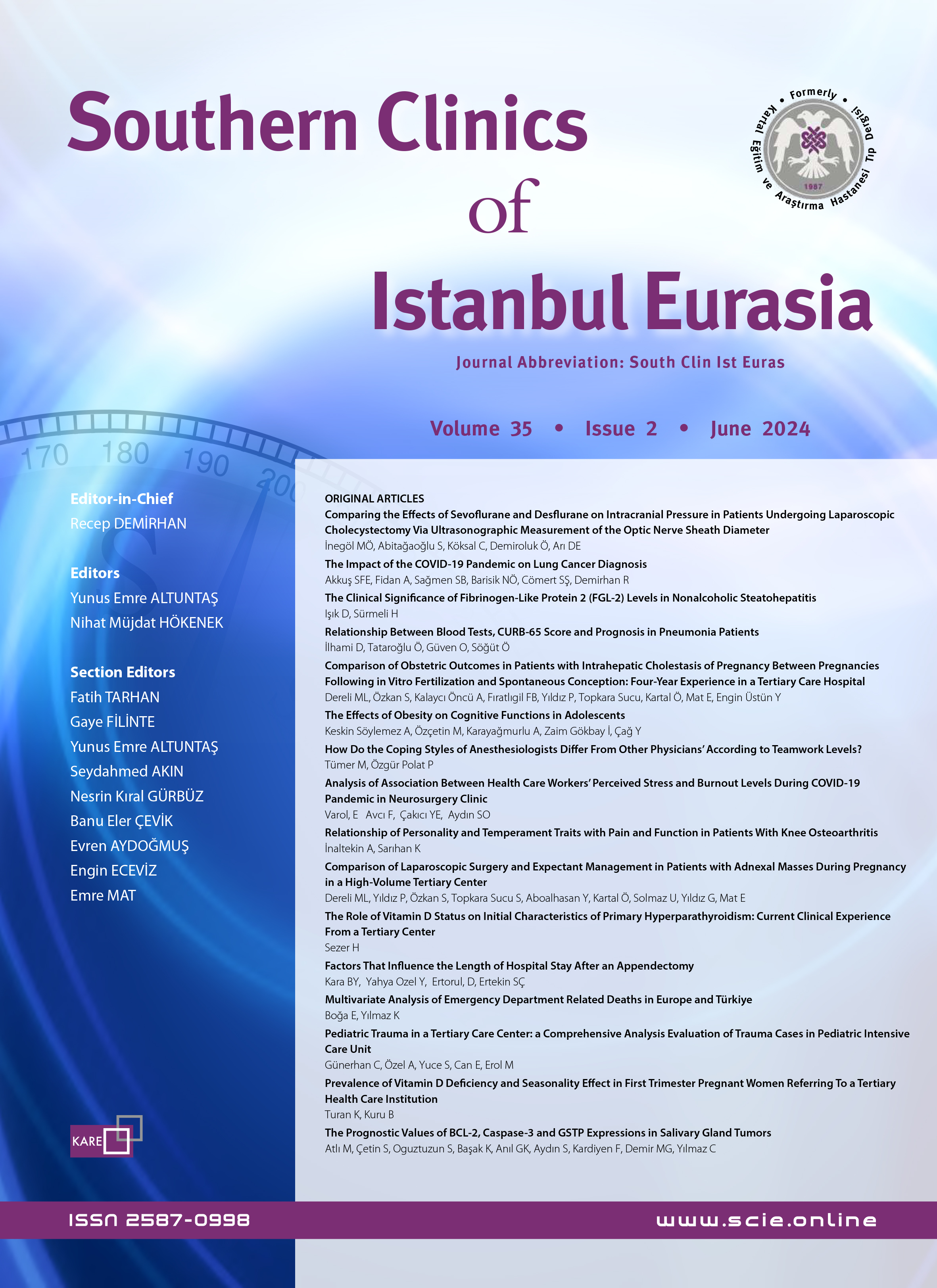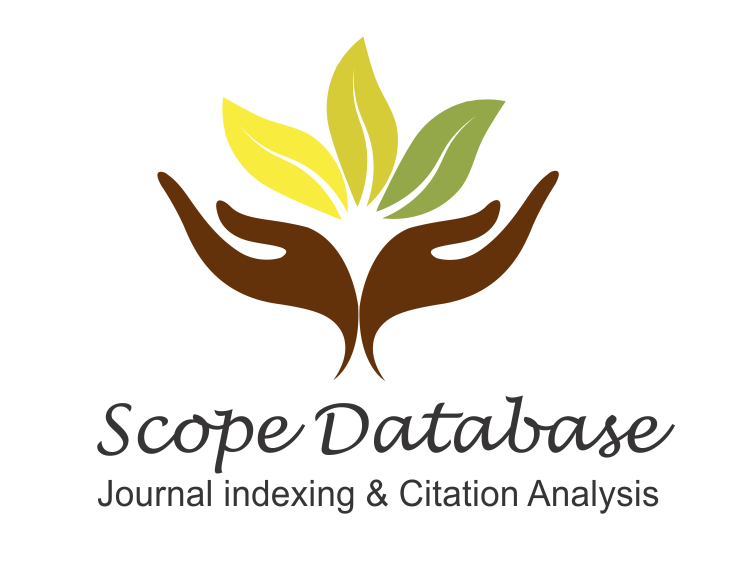Factors Affecting Survival in Early-Stage Lung Cancer other than Subtype and Stage
Berk Cimenoglu1, Salih Duman2, Suat Erus3, Berker Ozkan2, Murat Kara2, Recep Demirhan1, Alper Toker41Department of Thoracic Surgery, Kartal Dr. Lutfi Kirdar City Hospital, İstanbul, Türkiye2Department of Thoracic Surgery, Istanbul University Istanbul Medical Faculty, İstanbul, Türkiye
3Department of Thoracic Surgery, Koc University Hospital, İstanbul, Türkiye
4Department of Thoracic Surgery, West Virginia University, United States of America
INTRODUCTION: Main factors affecting survival in lung cancer are known to be histopathological subtype and stage. In this study, we aimed to uncover factors affecting long-term outcomes in early-stage lung cancer treated with thoracoscopic anatomical resection.
METHODS: The study took place between 2006 and 2018. A total of 204 patients who underwent thoracoscopic anatomical resection were evaluated retrospectively. Preoperative, perioperative, and postoperative parameters were evaluated, and their influence on survival was analyzed. Preoperative parameters, age, gender, and respiratory function tests diffusing capacity of the lungs for carbon monoxide (DLCO) are evaluated. Perioperative parameters included the type of anatomical resection and conversion to open thoracotomy. Postoperative parameters included major and minor complications, duration of hospital stay.
RESULTS: A total of 204 patients were included in the study. The 5-year survival rate was 76.5%. Age 65 or younger is related to better 5-year survival (80.6% vs. 67.7%, p=0.008). Five-year survival of patients with a DLCO value greater than 80% is 83.2%, and it is 51.1% for a DLCO value equal to or lower than 80% (p=0.001). Hospital stay for 4 days or less is related to better 5-year survival (86% vs 69%, p=0.017).
DISCUSSION AND CONCLUSION: In our study, it was determined that age, preoperative DLCO value, duration of hospital stay, and postoperative complication development were statistically significant in survival. However, conversion to open thoracotomy and the difference between segmentectomy and lobectomy did not have a specific effect on survival.
Akciğer Kanserinde Histopatolojik Alt Tip ve Evre Dışında Prognoza Etki Eden Faktörler
Berk Cimenoglu1, Salih Duman2, Suat Erus3, Berker Ozkan2, Murat Kara2, Recep Demirhan1, Alper Toker41Kartal Dr. Lütfi Kırdar Şehir Hastanesi, Göğüs Cerrahisi Kliniği, İstanbul, Türkiye2İstanbul Üniversitesi İstanbul Tıp Fakültesi, Göğüs Cerrahisi Anabilim Dalı, İstanbul, Türkiye
3Koç Üniversitesi Hastanesi, Göğüs Cerrahisi Anabilim Dalı, İstanbul, Türkiye
4West Virginia Üniversitesi, Göğüs Cerrahisi Anabilim Dalı, Amerika Birleşik Devletleri
GİRİŞ ve AMAÇ: Akciğer kanserinde sağ kalımı etkileyen temel faktörlerin histopatolojik alt tip ve evre olduğu bilinmektedir. Bu çalışmada torakoskopik anatomik rezeksiyonla tedavi edilen erken evre akciğer kanserinde uzun dönem sonuçları etkileyen faktörleri ortaya çıkarmayı amaçladık.
YÖNTEM ve GEREÇLER: Çalışma 2006-2018 yılları arasında gerçekleştirildi. Torakoskopik anatomik rezeksiyon uygulanan toplam 204 hasta retrospektif olarak değerlendirildi. Ameliyat öncesi, ameliyat sırası ve ameliyat sonrası parametreler değerlendirilerek sağ kalıma etkileri analiz edildi. Ameliyat öncesi parametreler, yaş, cinsiyet ve solunum fonksiyon testleri akciğerlerin karbon monoksit (DLCO) kapasitesi idi. Perioperatif parametreler anatomik rezeksiyon tipi ve açık torakotomiye geçiş idi. Ameliyat sonrası parametreler majör ve minör komplikasyonlar, hastanede kalış süresi idi.
BULGULAR: Çalışmaya toplam 204 hasta dahil edildi. Hastaların 5 yıllık sağkalımı %76,5 idi. 65 yaşlında veya daha genç olan hataların sağkalımları daha iyi bulundu (%80.6 ve %67.7, p=0.008). DLCO değeri %80in üzerinde olan hastaların 5 yıllık sağ kalımı %83,2 iken, DLCO değeri %80e eşit veya daha düşük olan hastaların 5 yıllık sağ kalımı %51,1 olarak tespit edildi (p=0.001). Hastanede 4 gün veya daha az kalış, daha iyi 5 yıllık sağkalım ile ilişkili olduğu görüldü (%86 ve %69, p=0.017).
TARTIŞMA ve SONUÇ: Çalışmamızda yaş, ameliyat öncesi DLCO değeri, hastanede kalış süresi, ameliyat sonrası komplikasyon gelişiminin sağkalım üzerinde istatistiksel olarak anlamlı olduğu belirlendi. Ancak açık torakotomiye geçiş ve segmentektomi-lobektomi arasındaki farkın sağkalım üzerine spesifik bir etkisi olmadığı görüldü.
Manuscript Language: English




















